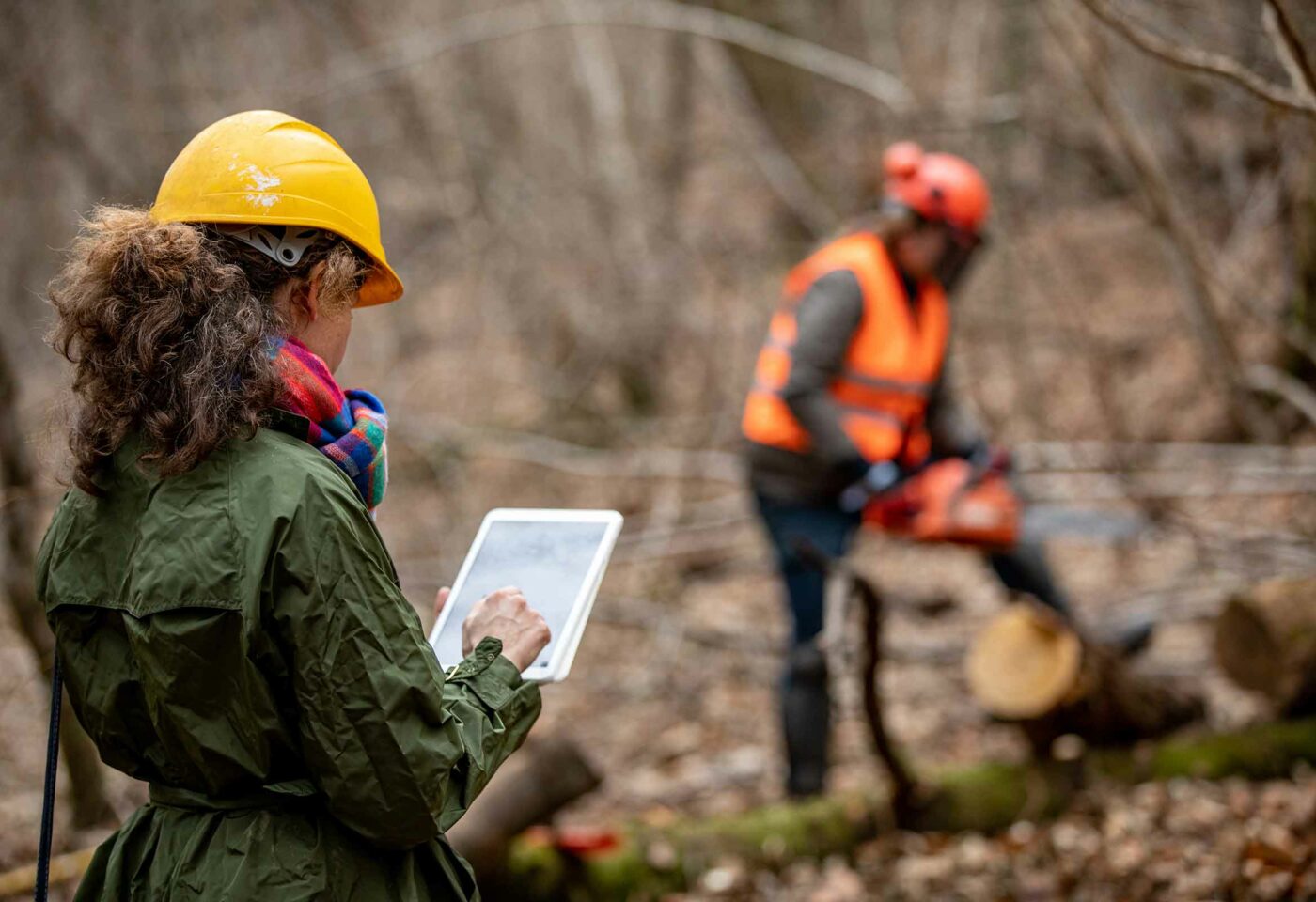
As rural and northern communities face unique challenges from post-COVID recovery, digital transformation and sector disruption, this issue takes a deep dive into the employment and training challenges, opportunities, and solutions facing these communities within Canada. If you know of something relevant and want to send for inclusion in the next brief, email .
Training opportunities in traditional and renewable energy
Minister Dan Vandal has announced $700,000 for energy projects in the Dehcho Region in the N.W.T. The Kǫ́ kǫni: New Fire-New Energy Project includes training opportunities for new hires and interns while the Gonezu Energy Project will support the Dehcho First Nation in building a “regional climate change strategy” according to the news release.
Ontario has received federal money to build “the first commercial grid-scale SMR [small modular nuclear reactor] in the Group of Seven wealthy nations” in Darlington, Ontario., according to a Reuters report. The Canadian Infrastructure Bank says the project “is expected to spearhead similar projects” as Alberta, Saskatchewan, and New Brunswick have jointly produced a strategic plan for SMRs. Five initial SMRs, including the new project in Ontario and four in Saskatchewan, are expected to generate approximately 30,000 jobs over their lifespan, from development to decommissioning.
There is a global challenge in building and sourcing a nuclear workforce as other countries also look to build nuclear infrastructure. In the U.K., Rolls Royce SMR provides 200 apprenticeships per year through its in-house program. In the U.S., NuScale has created Energy Exploration Centres, which include SMR control room simulators, to engage potential workers.
Employment programs in mining and forestry
The B.C. government has created a new Forestry Worker Supports and Community Resiliency Council to support forestry communities affected by new restrictions on old growth logging. It will help to improve training and employment programs and create new career and economic initiatives to meet community priorities.
Clean Energy Canada predicts that Canada’s electric vehicle industry will support up to 110,000 direct and indirect jobs by 2030. Evan Pivnick, the company’s program manager recommends a workforce transition plan that moves autoworkers to electric vehicle assembly and oilpatch workers to the chemical industry.
N.W.T. Premier Caroline Cochrane says roads are needed across a number of communities to provide access to 22 of the 31 minerals critical for EVs, and to provide employment opportunities for residents. The Premier would like to see the infrastructure gap between the N.W.T. and the rest of Canada closed. The projects will require workers across various sectors, including construction. The N.W.T. will send representatives to Morocco to attract workers in construction and other sectors as part of the Destination Canada Mobility Forum.
Federal Natural Resources Minister Jonathan Wilkinson says the country’s energy and critical minerals projects need to be fast-tracked. Wilkinson says that at the current rate “we will not have sufficient quantities of the minerals [needed to] build the cars…to get rid of the emissions in the transportation sector.”
The Regional Energy and Resource Tables initiative aims to transform regional industries and advance emerging opportunities based on economic growth identified by each province and territory. So far eight of 13 provinces and territories have joined the initiative.
Increasing capacity in community-based healthcare
The federal government has announced targeted recruitment of foreign-trained health care workers for regions of the country with the most need and which are also ready to recognize foreign worker credentials and enable them to work.
The Saskatchewan Health Authority has introduced enhanced health care positions across 49 rural and northern communities. The initiative has created 125 new, full-time positions.
The Government of Alberta has signed an MOU with the Republic of the Philippines to help streamline the province’s accreditation process for Filipino nurses. The College of Surgeons and Physicians of Alberta will also accelerate the international medical graduate evaluation process.
The newly formed Coalition for Action for Healthcare Workers met for the first time on Nov. 1 to discuss solutions to the healthcare labour crisis.
Supports for accessible rural education
Increasing rural accessibility to education has become a challenge throughout Western Canada. Chief Danny Gaudet of the Délı̨nę Got’ı̨nę Government told the N.W.T. government that increasing the number of Indigenous people working in the public sector requires supports for education within communities. A recent report from Praxis Solutions for the Saskatchewan School Boards Association encourages governments to see “education as an investment rather than an expense.” The report states that a dollar invested in K to 12 education offers a four dollar return in economic activity. Stakeholders have developed innovative solutions:
- Saskatchewan will provide a province-wide online school for the 2023/2024 school year so that students can access public education online wherever they are in the province.
- High school students on Cortes Island in B.C. have typically moved to Campbell River for the school year, returning home for weekends. The community has crowd-funded $200,000 to pilot “a half-year of public high school programming” to keep youth on the island. The pilot may be of interest to those in other parts of the country where students have to leave their homes for high school, which can lead to feelings of homesickness and disconnect.
- With liquefied natural gas facilities set to bring more workers and families to B.C.’s north, Coast Mountain College and StrongerBC have partnered to deliver “an accelerated basic [Early Childhood Educator] certificate for 14 students” from Kitimat and Kitamaat Village. Students can take one of two courses and then work, under supervision, in Early Childhood Educator positions while they pursue the rest of the certificate or other education.
- The Alberta government announced $5 million over three years for Indigenous post-secondary and workforce development initiatives, including $750,000 for Trade Winds to Success Training Society which provides workforce development initiatives in the skilled trades.
- Wolf Creek Public Schools in central Alberta will apply a $100,000 provincial government grant to increase the number of dual credit programs for high school students to receive post-secondary credit through their studies in “healthcare, trades and technology.”
- The Manitoba government has announced $400,000 for the Manitoba Rural Learning Consortium to include Kelsey school division and Mystery Lake and Flin Flon school districts. The Consortium will also offer literacy and numeracy supports across its network, including a Middle Years Literacy Action research project in Frontier School Division.
Broadband connectivity benefits and challenges
As communities continue to push for broadband investment and access, B.C. Stats has conducted a Kootenay Connectivity Benefits Study. The report concludes that for “the Kootenay region [the return on investment] was estimated to be 14 times the Province’s initial investment.” For example, $19.4 million in funding led to “$214 million in increased GDP over 20 years” from short-term job creation, municipal tax revenue and a long-term increase in productivity and opportunity for the region. Meadow Lake Tribal Council just announced the first Indigenous-owned internet service provider in Saskatchewan, Beaver River Broadband, which will partner with SaskTel. The council’s Tribal Chief Richard Ben said that the service provider “supports Indigenous self-determination — enabling our communities to improve access to education, employment, and essential programs and services for their members.” Wood Buffalo communities in Alberta are installing fibre optic lines at the same cost as their urban counterparts. Chipewyan First Nation will have public access at the school and youth centre.
Despite these benefits, there are still significant challenges to communities who want broadband infrastructure. The sixth annual Indigenous Connectivity Summit held in Winnipeg this fall highlighted barriers for Indigenous communities, such as an inability to cover up-front costs, including construction overruns. Read the Winnipeg Free Press article for more.
Other news
- The Recovery on Campus program, a University of Calgary-based initiative aims to break the stigma in addiction and public higher education workplaces across Alberta.
- Edmonton is the first Canadian city to join UNESCO’s Global Network of Learning Cities. The network connects education, training and cultural institutions to promote inclusive and quality learning while enhancing economic development and cultural prosperity.
- In light of the Alberta government’s order for major universities to freeze new partnerships with China, the province has hired Gordon Houlden, former Canadian diplomat, to advise on new rules for all post-secondary foreign collaborations.
- The Saskatchewan government will provide almost $11 million in funding for Employability Assistance for Persons with Disabilities (EAPD) programming and services.
- Level Up: Winnipeg will give Manitoba students the opportunity to explore a Minecraft version of downtown Winnipeg and pitch innovative ideas to solve city challenges to a panel of experts.
- An Angus Reid Institute study shows the number of service sector workers dropped by 18% over the last two years: 22% of the decline was among workers aged 18-24 years ,15% was within 25-34 year olds, with the remaining 63% from those over 35.
- Saskatchewan, B.C. and Alberta will experience dramatic population growth of 18-21 year olds by 2030 while other provinces should see growth for these groups plateau. With international student tuition fees more lucrative for institutions than domestic fees, governments and institutions will need to find ways to accommodate increased demand for domestic enrollment.
The Future of Work & Learning Brief is compiled by Stephany Laverty, Janet Lane, and Justin Rodych. If you like what you see, subscribe to our mailing list and share with a friend. If you have any interesting stories for future editions, please send them to .
